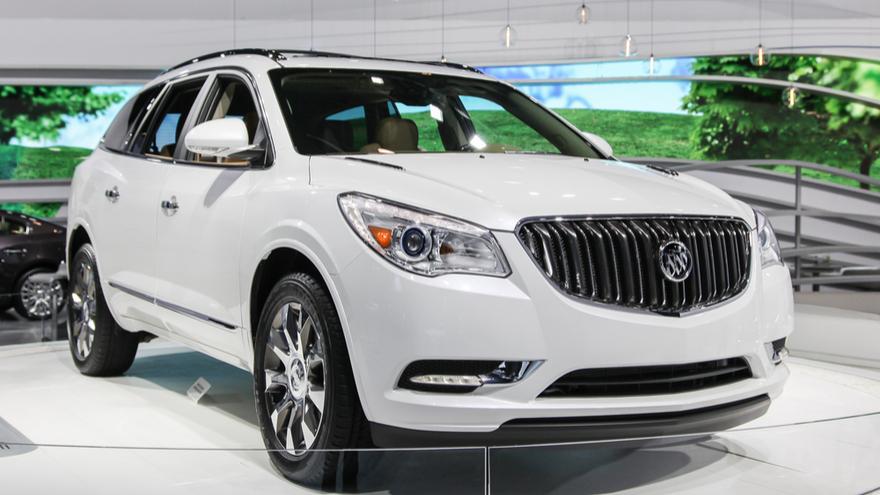The coronavirus effect on dealer customer service satisfaction

Buick ranks highest in satisfaction with dealer service among mass market brands. Pictured is the 2015 Buick Enclave. Photo credit: Miro Vrlik Photography / Shutterstock.com.
As the coronavirus crisis continues, the J.D. Power 2020 Customer Service Index Study released Thursday marks the fifth consecutive year of increasing satisfaction with dealer service.
However, Chris Sutton says it is unknown how widespread or long-lasting the ripple effect of the coronavirus will be for the automotive industry.
“It inevitably will have a financial effect on dealers’ service business,” said Sutton, who is vice president of the U.S. automotive retail practice at J.D. Power, in a news release. Sutton said automakers and dealers should prioritize securing sources for their parts supplies. Otherwise, they could face the consequences of losing business.
As the crisis continues to interrupt global supply chains, auto dealers are bracing for parts shortages that could undermine customer satisfaction gains that have taken place over the past few years. But in this year's J.D. Power study, overall satisfaction increases to 837 on a 1,000-point scale.
Crisis could undermine satisfaction
That marks the fifth consecutive year of increasing satisfaction.
In a ranking of brands, Lexus ranks highest in satisfaction with dealer service among luxury brands. Buick ranks highest in satisfaction with dealer service among mass market brands for a fourth consecutive year.
As the coronavirus crisis unfolds, however, the ability to perform prompt service and repairs could be undermined. Sutton said customers at first will be understanding of coronavirus consequences, but shortages could continue well beyond the current public health crisis. Customers in August might not understand why no parts are available to repair their vehicles, for example.
“Performing work right the first time is the most critical activity for service satisfaction, and dealers now do a good job by successfully completing work 94% of the time,” Sutton said.
Sutton continued, “Under normal circumstances, 20% of the work that isn’t completed the first time is due to parts being unavailable, which is a source of frustration for customers. That 20% could dramatically increase due to parts suppliers’ extended shutdowns in China and other locations. When parts are unavailable, customer satisfaction and intended loyalty significantly decline.”
When parts are unavailable, overall satisfaction declines 155 points among luxury vehicle owners. Among owners of mass market vehicles, a 141-point drop in satisfaction occurs when parts are unavailable. In business terms, that decline means a drop from 63% to 30% of owners in the luxury segment who say they “definitely will” return for service.
That drop is down to 26% from 58% in the mass market segment.
The study measures satisfaction with service at a franchised dealer or independent service facility for maintenance or repair work among owners and lessees of one- to three-year-old vehicles. It also shows a numerical index ranking of the highest-performing automotive brands sold in the United States, which is based on the combined scores of five different measures (in order of importance): service quality (27%); service initiation (20%); service adviser (20%); service facility (17%); and vehicle pick-up (16%).
Key findings
The study is based on responses from 71,286 verified registered owners and lessees of 2017 to 2019 model-year vehicles.
The study was fielded from August through December 2019.
One key finding of the 2020 study: Time is most important. Customers rate the total time to complete service on their vehicle and amenities offered by the dealership the lowest (in a tie) of 16 analyzed attributes. Fairness of charges is the third-lowest attribute.
Courtesy of service adviser, cleanliness of dealership and knowledge of service adviser are the highest-rated attributes.
Another key finding: Younger customers’ higher expectations continue, but the gap is narrowing: Gen Y customers, who are between ages 25 and 42, represent a growing percentage of new-vehicle buyers. Younger customers historically express lower satisfaction than older customers, and this year’s study shows that to be the case.
However, when compared to similarly aged customers 15 years ago, overall satisfaction of those in the age group of 25-44 was 57 points lower than among those aged 45 and older. Gen Y customers now show higher intended dealer loyalty for paid service work than similarly aged customers did 15 years ago.
Other key findings are that fewer miles and longer service intervals decrease interactions between dealers and customers and that dealers capture a greater percentage of service visits. Dealers capture 88% of customers’ annual service visits in the first three years of ownership compared to non-dealers, and that is up from 79% in 2015.
The study provided more detail on brands. After Lexus, Cadillac and Porsche ranked second in a tie regarding satisfaction with dealer service among luxury brands. Infiniti ranked fourth and Lincoln ranked fifth.
After Buick among mass market brands, Chevrolet ranked second, followed by GMC, Mitsubishi and Toyota.
Sutton said that aside from supply issues, the service business could face several long-term challenges. Vehicles require less-frequent maintenance. Because owners are driving fewer miles and stretching out the time between service visits, dealers should do everything they can to boost satisfaction.
“Retaining customers as vehicles age and warranties expire is key for dealers, especially as the sales market slows,” Sutton said.
Sutton continued, “Simple things like returning a vehicle to the customer cleaner than when it was brought in can increase satisfaction scores by 31 points, and dealers do this less than half the time. There’s no time to slack on delivering what customers expect if service departments are to continue to comprise a large percentage of dealership profitability.”

 View The Latest Edition
View The Latest Edition

